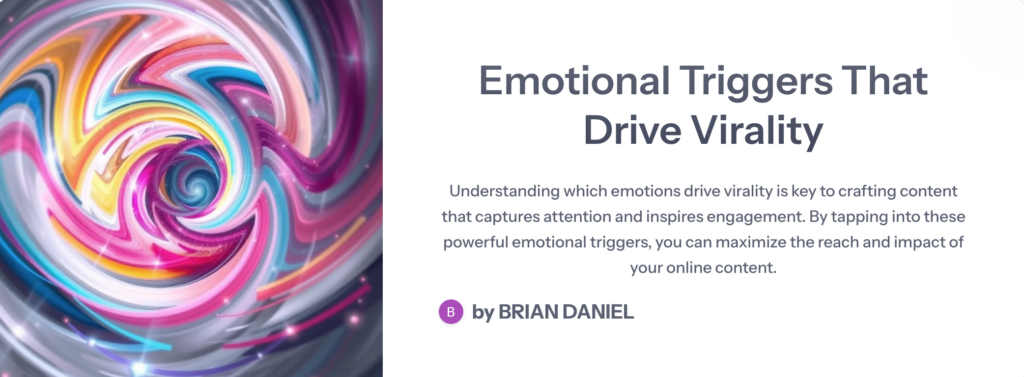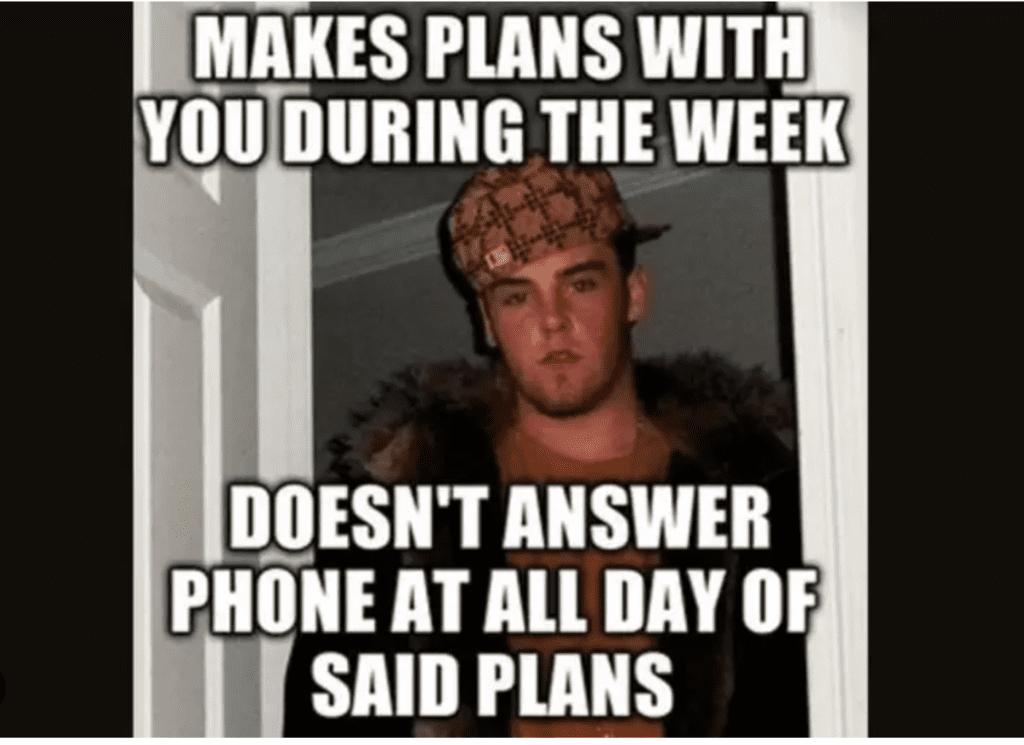
Ok so have you ever wondered why some posts explode while others flop? I did and I found a lot of fascinating data. It’s not just luck, it’s psychology. Viral content taps into deep emotional triggers and follows patterns that push people to hit that share button. If you’re in digital marketing, content creation, or social media strategy, the psychology of viral content is a Game-Changer for us in the tech industry. It could even be called a “cheat sheet” or “mythical weapon” for a recipe to create viral content consistently as long as the right emotions are triggered then emotions can drive shares.
In this guide, I’m breaking down:
- The emotional triggers that drive shares
- Important data to measure virality
- Actionable ways to create “share-worthy content”
- Scientific research on decision-making online vs. real life
I Will also be covering these 3 Topics
1. Relevant Articles and Studies:
- The Psychology Behind Viral Content: This article discusses how emotionally charged content influences sharing behaviors, emphasizing the role of high-arousal emotions in driving virality.
sgs.upm.edu.my - What Makes Online Content Viral? This research paper examines how content characteristics, particularly emotional elements, affect virality.
journals.sagepub.com
2. Relevant Case Studies: The Ice Bucket Challenge & Distracted BF meme
The Ice Bucket Challenge is a prime example of how combining social good with engaging content can lead to viral success. Participants would pour ice water over themselves and challenge others to do the same, promoting awareness for ALS. This campaign effectively used social networks and emotional engagement to spread rapidly.
3. Psychological Insights:
Research indicates that “content evoking high-arousal emotions, such as awe, anger, or anxiety, is more likely to be shared.” Understanding these emotional triggers can help in crafting content that resonates with audiences and encourages sharing. – journals.sagepub.com
Alright here we go let’s go!……
Why Do People Share Content?
Sharing also isn’t random and Involves close to Zero Luck. People share content for a few core reasons:
- Emotional Connection – If it makes them feel something strong, they’ll share it.
- Identity & Self-Expression – People share content that reflects who they are or what they believe in.
- Social Currency – If it makes them look good or in-the-know, they’ll pass it on.
- Practical Value – Helpful, valuable content gets shared because it benefits others.
- Storytelling & Entertainment – Good stories and humor spread fast.
But how do these motivations translate into actual content that performs well online? Let’s see the emotional triggers that fuel virality.
Emotions that drive shares
Certain emotions are more likely to make people engage and share. Here are the heavy hitters:
High-Stimulation Positive Emotions
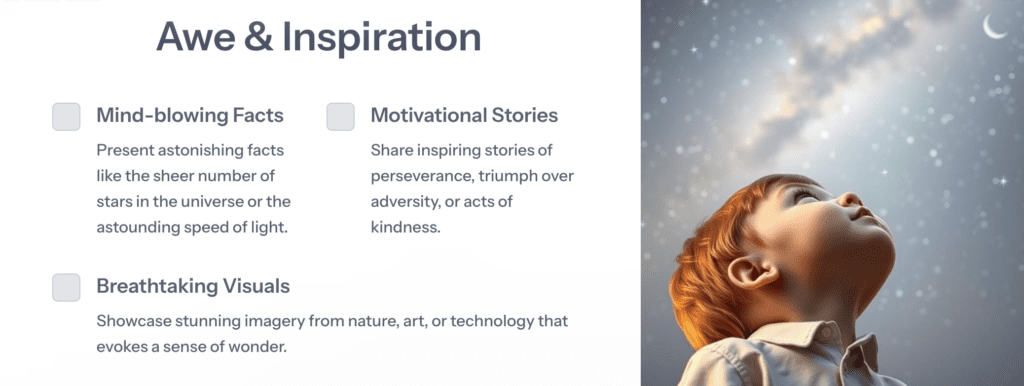
Awe & Inspiration – I think of mind-blowing facts, motivational stories, or breathtaking visuals.
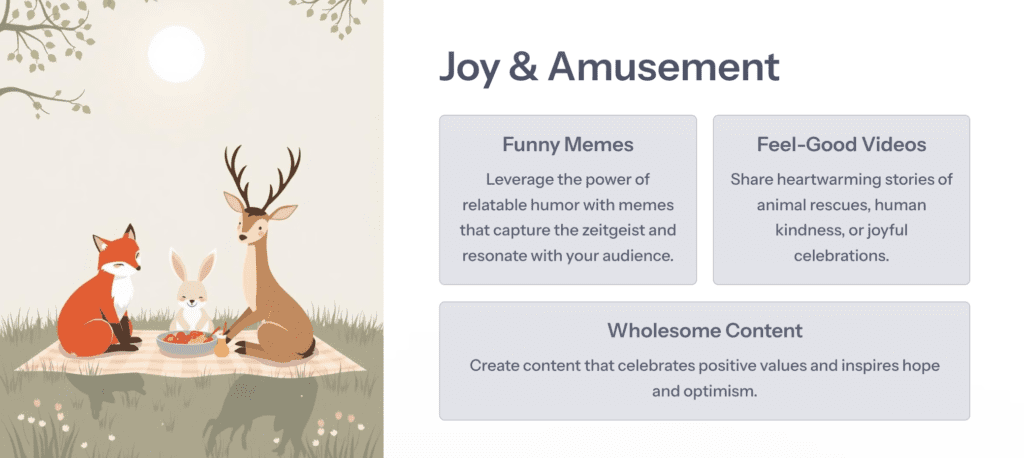
Joy & Amusement – Funny memes, feel-good videos, and wholesome content spread like butter.
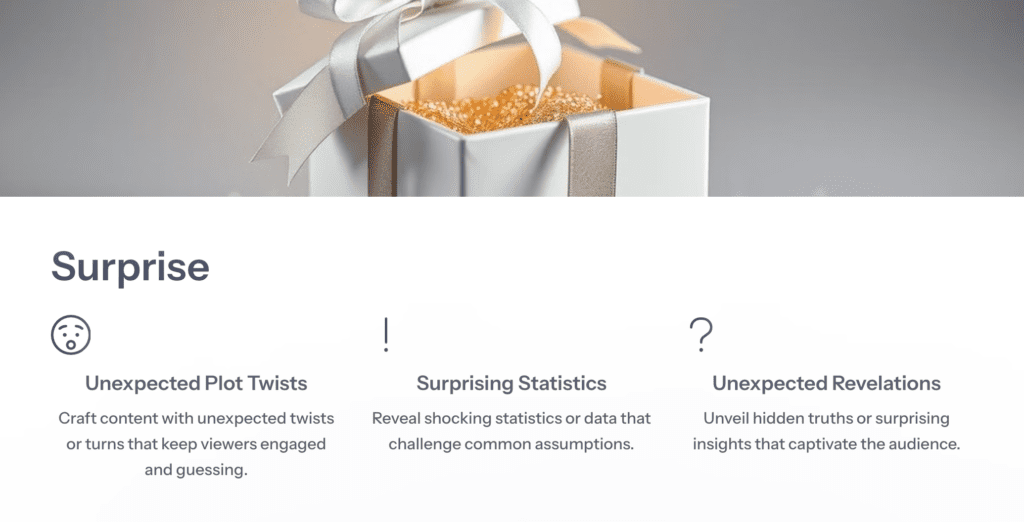
- Surprise – Unexpected plot twists or surprising statistics create engagement.
High-Stimulation Negative Emotions:
Anger & Outrage – Controversial topics that fire people up get shared as people rally around a cause.
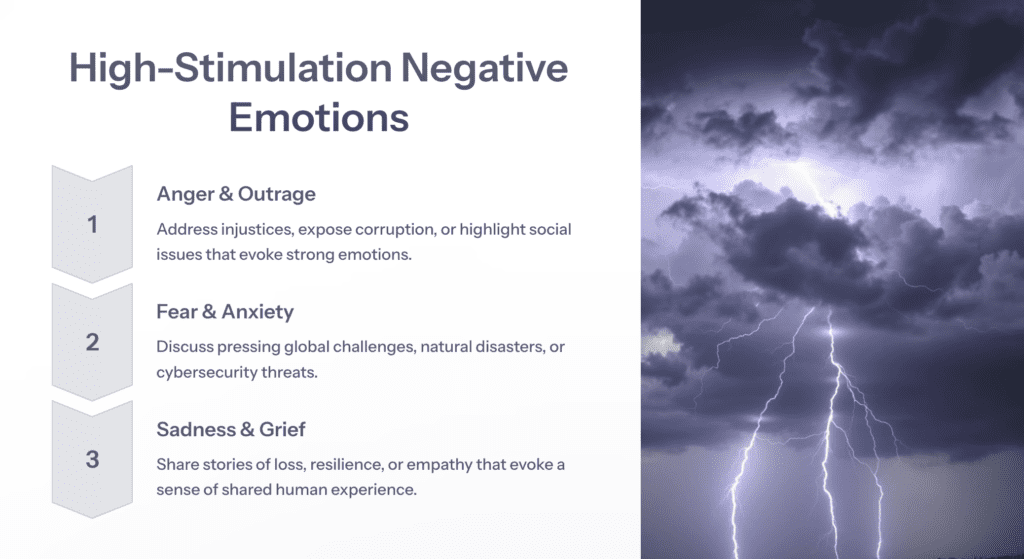
- Fear & Anxiety – Warnings, shocking news, or anything that triggers concern travels fast.
- Sadness & Empathy – Heartwarming or tear jerking stories connect deeply and encourage sharing.
Understanding the psychology behind viral content is essential for creating material that connects with audiences and encourages sharing. Research indicates that several key factors contribute to emotions that drive shares:
- Emotional Engagement: Content that evokes, or creates strong emotions, Usually positive ones like awe, amusement, or excitement is more likely to be shared. Studies have shown that emotionally charged content has a higher chance of going viral.
sparringmind.com
- Novelty and Surprise: People are drawn to new and unexpected information. Content that offers something unique or surprising can capture attention and prompt sharing.
thesilab.com
- Practical Value: Content that provides useful information or practical tips is more likely to be shared, as individuals enjoy helping others by passing along valuable knowledge.
thebftonline.com
- Social Currency: Sharing content that makes individuals appear knowledgeable or in-the-know can enhance their social status, motivating them to share such content.
nfx.com
- Humor: Funny content is often shared because it brings joy and amusement to others, making it more likely to go viral. thebftonline.com
Later for content on why some videos go viral, you might find the following video helpful
Additionally, the article “Deep Feelings”: A “Huge Cross-Lingual Study on the Relation between Emotions and Virality” if you take time to read it really is a great analysis of how different emotions influence the virality of content. arxiv.org
By us understanding these psychological triggers, creators and marketers can craft content that is more likely to engage audiences and encourage sharing.
Key Takeaway: High-stimulation emotions (positive or negative) = higher shares. Neutral emotions? Not so much.
Measuring Performance

If you want to know whether your content is actually hitting, keep an eye on these:
- Shares – The ultimate sign of viral potential.
- Engagement Rate – Likes, comments, and shares combined tell you if people care.
- Click-Through Rate (CTR) – Measures how many people click after seeing your post.
- Watch Time (For Video Content) – The longer people watch, the better.
- Bounce Rate – Lower bounce rate means people actually stay and read your content.
- Conversion Rate – Are people taking action (signing up, buying, etc.) after engaging?
How to Create Viral-Worthy Content
1. Start with a Killer Hook
Your first line determines if people keep reading or scrolling past. Make it bold, intriguing, and emotional.
Use questions: “Did you know 90% of viral posts share this one trait?”
Use bold statements: “Everything you know about viral content is wrong.”
Tell a quick story: “This post got 1M shares in 24 hours—here’s how.”
2. Use Engaging Visuals
Visuals increase shareability. Make sure you’re using:
- High-quality images
- Short, snappy videos
- Infographics that break down data
3. Optimize to make it “User Friendly”
- Keep it relatable – Speak your audience’s language.
- Make it snackable – Short, scannable, easy to digest.
- Encourage engagement – Ask questions, use polls, invite responses. Spread awareness
4. Leverage Trends & Timing
Jump on trends while they’re hot. Use tools like Google Trends, BuzzSumo, and Twitter Trends to spot what’s blowing up.
5. Tap into Communities
Share your content where your audience actually hangs out, odds are your demographic is including friends and family, Mine is so that’s a great asset also :
- Facebook Groups
- Reddit & Niche Forums
- LinkedIn & Twitter Threads
6. Use Data-Backed Headlines
Numbers and data boost credibility and attract clicks. Try:
Case Studies: Viral Content in Action
Study #1: The Ice Bucket Challenge: You remember right?

- Emotional Trigger: Social good (charity), fun, and FOMO (fear of missing out)
- Metrics: 17M videos created, 2.5M shares per day
- Takeaway: Challenge-based content with a cause works.
Case Study #2: The ‘Distracted Boyfriend’ Meme: This one is real time viral as of February 2025

- Emotional Trigger: Humor and relatability
- Metrics: Thousands of remixes, I seriously see this one almost every day for something else creating millions of shares
- Takeaway: Simple, flexible, and funny = goldmine.
The Science Behind Shareable Content
Psychologists have studied content virality for a long time now . What they’ve found is, content that triggers high-stimulation emotions in us humans, activates the brain’s dopamine and oxytocin centers like a feel good reward, making people more likely to engage and for that emotion to drive shares.
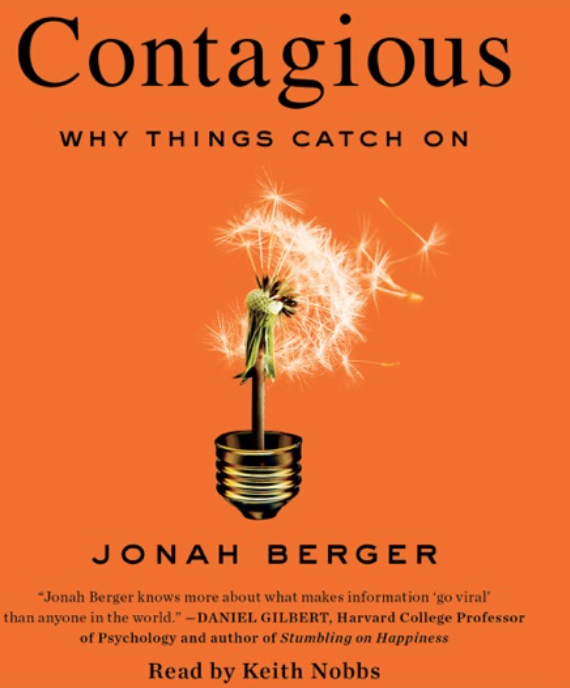
For a more in-depth exploration of these factors, Jonah Berger’s book “Contagious: Why Things Catch On” offers valuable insights into the elements that make content shareable.
A study by Jonah Berger, author of Contagious: Why Things Catch On, found that “content evoking awe, anger, or anxiety is shared 28% more than neutral content.”
Dr. Nicholas Carr, author of The Shallows: What the Internet Is Doing to Our Brains, highlights that decision-making online is drastically different from real life. He explains that when we’re bombarded with constant digital stimuli, our ability to process deeply and critically diminishes. This makes fast, emotionally charged content even more likely to spread since people react before analyzing. This reinforces why high-stimulation emotions drive viral content.
Final Thoughts: Turning Insights into Action
If you want your content to spread like butter, focus on emotions, engagement, and data-driven strategies.
1. Hook your audience early.
2. Tap into high-stimulation emotions
3. Use strong visuals and storytelling
4. Track your key metrics and tweak as needed
This is a recipe for viral content, now try implementing psychological strategy more and see what it does to your traffic analytics, if you see a spike odds are people are feeling it.
Thank you all immensely for joining me here on my blog, this is definitely an interesting and very fluid for me, meaning the industry is constantly changing or evolving if you will. So next time you’re watching a viral video ………. Think of psychology also. Read along other blogs of mine also i have written a 3 part cluster topic read along other blogs also
